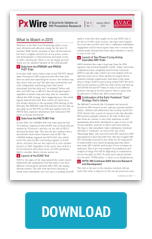The CUREiculum is a suite of tools that provides simple, accessible information on HIV cure research. As part of the effort to increase research literacy around cure, the CUREiculum team, a collaboration of community educators, researchers and advocacy organizations, will be presenting a webinar series that focus on issue-specific topics crucial to understanding the research landscape.
Check out the first three webinars in the series!
Stakeholder Engagement in Cure Research
Friday March 13, 11 am ET
Watch a recording of the webinar!
This webinar, led by Jessica Handibode of AVAC, will discuss how the Good Participatory Practice (GPP) guidelines, developed by UNAIDS and AVAC, can be applied to HIV cure research. GPP provides trial funders, sponsors and implementers with systematic guidance on how to effectively engage with all stakeholders. Drawing from the literature and past HIV prevention trials, the webinar will explore the history and importance of engaging community stakeholders early in the research process.
Latency Reversing Agents
Thursday March 26, 4 pm ET
Watch a recording of the webinar!
This webinar will feature Dr. David Margolis, Principal Investigator of the CARE Collaboratory at University of North Carolina at Chapel Hill, and Dr. Sharon Lewin member of the DARE Collaboratory and Director of the Infectious Disease department at Monash University. Latency reversing agents are biological compounds used to “wake up” HIV infected cells from their resting state in the body. The drugs are used as the “kick”, the first in a two phase strategy often called “kick and kill”. Both researchers will discuss what latency reversing agents are and how the research might contribute to a combination curative strategy.
Early ART
Thursday April 2 at 11 am ET
Watch a recording of the webinar!
Dr. Jintanat Ananworanich, Associate Director for Therapeutics Research at the U.S. Military HIV Research Program (MHRP) of the Walter Reed Army Institute for Research (WRAIR), will present the scientific mechanisms of early treatment and explain how it relates to HIV cure research. Administering early antiretroviral therapy can have a significant impact on limiting the reservoir—the cells that contain non-replicating HIV—in an HIV-positive individual. Starting ART very early after HIV infection has been linked to very low viral loads and even to apparent “remission” (periods of no detectable viral load).
For more information, please contact Jessica ([email protected]) or Karine ([email protected]). The full schedule for the 2015 CUREiculum webinar series is available.



 The Collaboratory of AIDS Researchers for Eradication – CARE – endorses the approach of small pharmacological molecules to finding a cure for HIV infection. We believe that this method represents the safest, most scalable, and accessible strategy to eradicating HIV in the future. By using established drug discovery tools, we hope to launch a pipeline of small pharmacological molecules to be used in human studies. These small molecules would induce the expression of the replication-competent latent HIV proviral genomes within resting CD4+ T cells and make them susceptible to the immune clearance and the effect of HAART. In the literature, this is also called the “shock and kill” strategy or “induction and clearance.” This method relies on reactivating the rare remaining reservoirs while patients take their HAART.
The Collaboratory of AIDS Researchers for Eradication – CARE – endorses the approach of small pharmacological molecules to finding a cure for HIV infection. We believe that this method represents the safest, most scalable, and accessible strategy to eradicating HIV in the future. By using established drug discovery tools, we hope to launch a pipeline of small pharmacological molecules to be used in human studies. These small molecules would induce the expression of the replication-competent latent HIV proviral genomes within resting CD4+ T cells and make them susceptible to the immune clearance and the effect of HAART. In the literature, this is also called the “shock and kill” strategy or “induction and clearance.” This method relies on reactivating the rare remaining reservoirs while patients take their HAART.